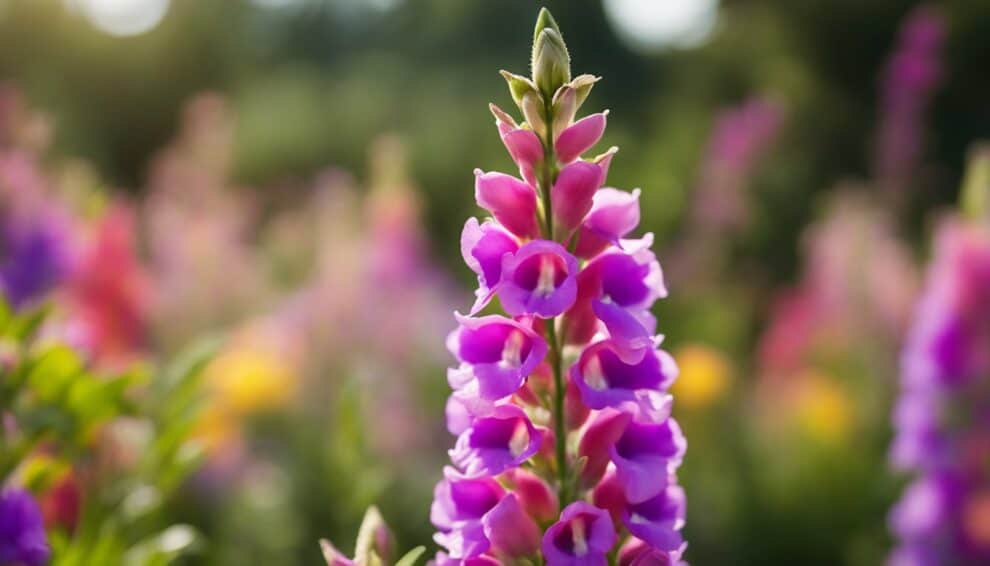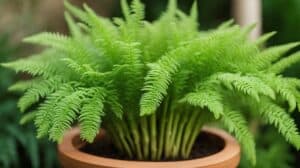Antirrhinum Majus, commonly known as the snapdragon, is a classic flower that has been grown for centuries.
This plant is native to the Mediterranean region and has been cultivated for its beautiful flowers that come in a variety of colors, including pink, red, yellow, and white.
Despite its popularity, the snapdragon has fallen out of favor in recent years, as gardeners have turned to newer, more exotic flowers.

However, there is a growing movement to revive the classic snapdragon and bring it back into the spotlight.
Gardeners and horticulturists alike are rediscovering the beauty and versatility of this plant, and are working to develop new varieties that are even more stunning than their predecessors.
With its compact size, vibrant colors, and easy-to-grow nature, the snapdragon is the perfect choice for anyone looking to add a touch of classic beauty to their garden.
History and Cultivation
Origins and Domestication
Antirrhinum majus, commonly known as the snapdragon, is a flowering plant native to the Mediterranean region.
The name “snapdragon” comes from the flower’s resemblance to a dragon’s head, which opens and closes its mouth when squeezed.
The plant has a long history of cultivation, dating back to ancient times.
The first recorded cultivation of snapdragons was by the ancient Greeks, who used the flowers in their religious ceremonies.
The Romans also cultivated snapdragons and used them in their gardens.
The plant was later introduced to England in the 1500s, where it became a popular garden plant.
Cultivation Techniques
Snapdragons are easy to grow and can be grown from seeds or cuttings. They prefer full sun and well-drained soil.
The plant is a self-seeder and will reseed itself if allowed to go to seed.
Snapdragons come in a variety of colors, including pink, yellow, red, and white. They are often used in borders, rock gardens, and as cut flowers.
The plant is also a favorite of hummingbirds and butterflies.
To encourage bushier growth, snapdragons should be pinched back when they are about 6 inches tall.
This will encourage the plant to produce more branches and flowers.
Deadheading, or removing spent flowers, will also encourage the plant to produce more blooms.
Overall, snapdragons are a classic garden plant that is easy to grow and adds a pop of color to any garden.
With a little bit of care and attention, snapdragons will thrive and provide beautiful blooms year after year.
Botanical Characteristics

Morphology
Antirrhinum majus, commonly known as the snapdragon, is an herbaceous perennial plant that belongs to the family Plantaginaceae.
The plant is native to the Mediterranean region, but it is widely cultivated in gardens and parks around the world.
The snapdragon plant grows up to 1 m tall, with lance-shaped leaves that are arranged alternately along the stem.
The flowers of the snapdragon are unique in shape and color.
The flowers are bilaterally symmetrical, with a distinctive “snap” when the sides of the flower are gently squeezed.
The flowers come in a wide range of colors, including white, pink, red, orange, yellow, and purple.
The snapdragon blooms from late spring to early autumn, producing flowers that are attractive to bees, butterflies, and other pollinators.
Genetic Diversity
Antirrhinum majus has a rich genetic diversity, which has allowed plant breeders to develop new cultivars with unique characteristics.
The snapdragon has a diploid genome with 16 chromosomes, and it is a model organism for studying plant development and gene regulation.
The genetic diversity of the snapdragon is reflected in the wide range of flower colors and shapes, as well as in the plant’s ability to adapt to different environmental conditions.
In recent years, there has been renewed interest in the snapdragon plant, as gardeners and plant breeders seek to revive this classic garden favorite.
With its unique flowers, easy care, and adaptability to different growing conditions, the snapdragon is sure to remain a popular choice for many years to come.
Gardening and Care

Planting Tips
Antirrhinum Majus, commonly known as the Snapdragon, is a classic garden plant that can be grown in a variety of soil types.
It is best to plant the seeds in a well-draining soil that is rich in organic matter.
The best time to plant the seeds is in the early spring when the soil temperature is above 50°F.
The seeds should be sown at a depth of 1/8 inch and spaced 6-8 inches apart.
It is important to keep the soil moist but not waterlogged during the germination period, which usually takes 7-14 days.
Maintenance and Pruning
Once the Snapdragon plant has established, it requires minimal maintenance.
However, there are a few things that can be done to ensure the plant remains healthy and produces beautiful blooms.
Regular watering is essential for the Snapdragon plant. It is best to water the plant deeply once a week rather than a little bit every day.
This will encourage deep root growth and prevent the plant from becoming waterlogged.
Deadheading is an important part of maintaining the Snapdragon plant.
This involves removing the spent blooms from the plant to encourage new growth and prolong the blooming period.
Deadheading can be done by pinching off the flower stem just below the spent bloom.
Pruning is another important aspect of maintaining the Snapdragon plant. This should be done in the early spring before new growth begins.
Pruning involves removing any dead or damaged stems and shaping the plant to encourage bushy growth.
By following these simple gardening and care tips, the Antirrhinum Majus or Snapdragon plant can be a beautiful addition to any garden.
Cultural Significance

Antirrhinum Majus, commonly known as the Snapdragon, has a rich cultural significance that spans centuries.
This beautiful flowering plant has been used in various ways throughout history, from its symbolism in folklore to its modern uses in gardening and medicine.
Symbolism and Folklore
In folklore, the Snapdragon is often associated with deception and trickery.
According to legend, the plant was once a fierce dragon that was defeated by a brave knight.
As a result, the dragon was transformed into the Snapdragon, which still bears the marks of its former fiery nature in the shape of its flower petals.
In addition to its association with dragons, the Snapdragon has also been used as a symbol of grace and strength.
In Victorian times, the flower was often given as a gift to express admiration and respect for someone’s courage and determination.
Modern Uses
Today, the Snapdragon is a popular choice for gardeners and florists alike.
Its tall, spiky blooms come in a variety of colors, ranging from white and pink to yellow and red, making it a versatile addition to any garden or bouquet.
In addition to its ornamental uses, the Snapdragon has also been used in traditional medicine to treat a variety of ailments.
Its leaves and flowers contain compounds that have been shown to have anti-inflammatory and pain-relieving properties, making it a natural remedy for conditions such as arthritis and headaches.
Overall, the Snapdragon’s cultural significance and practical uses make it a beloved plant that continues to thrive in gardens and folklore around the world.
Frequently Asked Questions

How can one properly care for Antirrhinum majus to ensure its longevity?
To ensure the longevity of Antirrhinum majus, it is important to provide them with adequate water and sunlight.
These plants prefer well-drained soil and should be watered regularly to keep the soil moist.
It is also important to deadhead the spent flowers to encourage new growth.
What are the ideal growing conditions for healthy snapdragon plants?
Snapdragons thrive in cool weather and prefer temperatures between 55-65°F.
They also require at least 6 hours of direct sunlight per day and well-drained soil. It is important to avoid overwatering as this can lead to root rot.
How should one space Antirrhinum majus plants for optimal growth?
Antirrhinum majus plants should be spaced 6-12 inches apart to allow for optimal growth.
This spacing will also help to prevent overcrowding and the spread of disease.
What steps can one take to encourage snapdragons to bloom more vibrantly?
To encourage snapdragons to bloom more vibrantly, it is important to deadhead spent flowers regularly.
It is also recommended to fertilize the plants every 4-6 weeks with a balanced fertilizer.
Additionally, providing the plants with adequate sunlight and water will help to promote healthy growth and vibrant blooms.
What does ‘cv’ stand for in plant nomenclature, and how does it apply to snapdragons?
‘CV’ stands for ‘cultivar’ in plant nomenclature and is used to denote a particular variety of a plant that has been cultivated for specific characteristics.
In the case of snapdragons, there are many different cultivars available, each with its own unique color, size, and growth habit.
Why might Antirrhinum majus plants be wilting, and how can they be revived?
Antirrhinum majus plants may wilt if they are not receiving adequate water or if they are being exposed to high temperatures.
To revive wilted plants, it is important to water them thoroughly and move them to a cooler location.
If the plants are severely wilted, it may be necessary to prune them back to encourage new growth.














